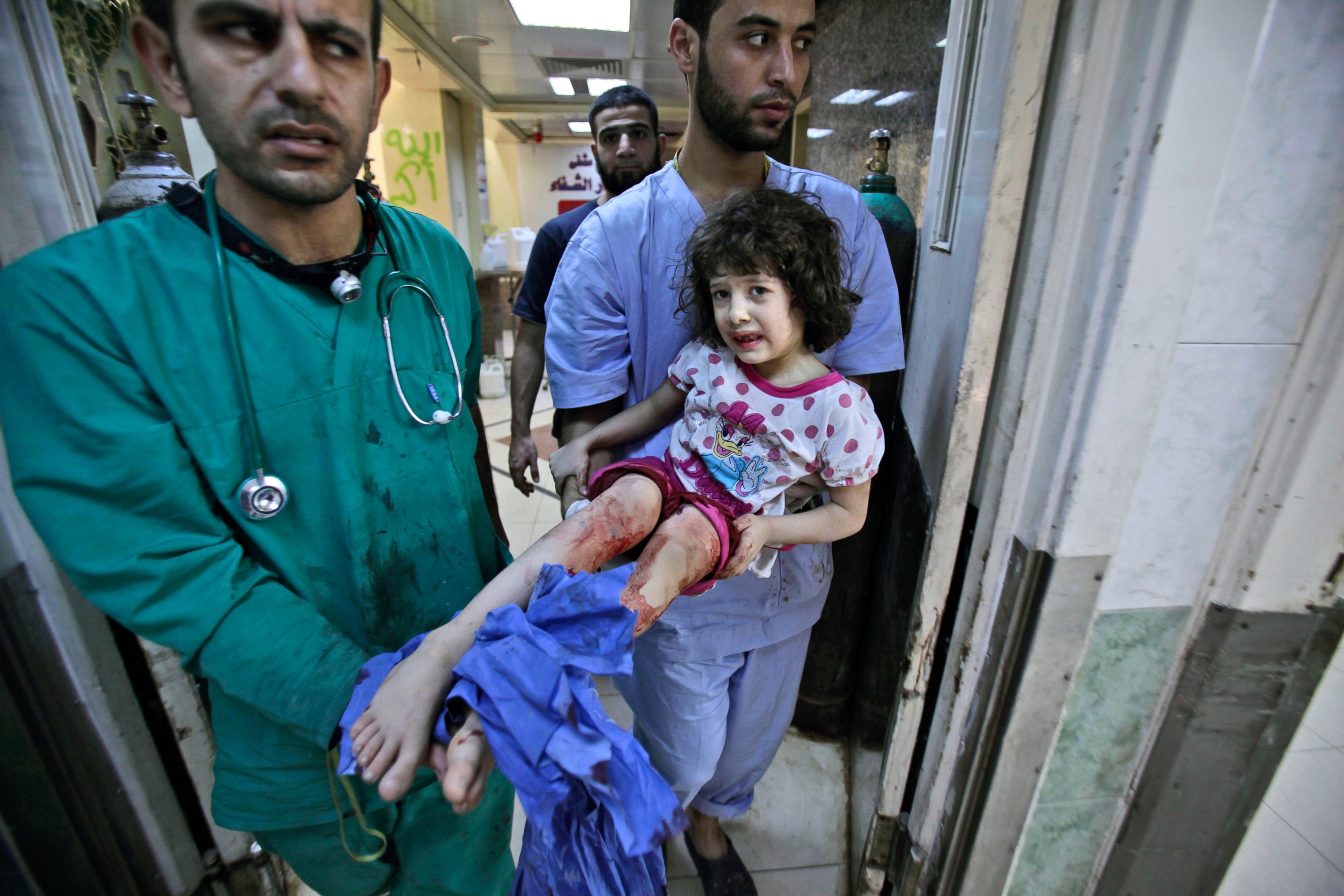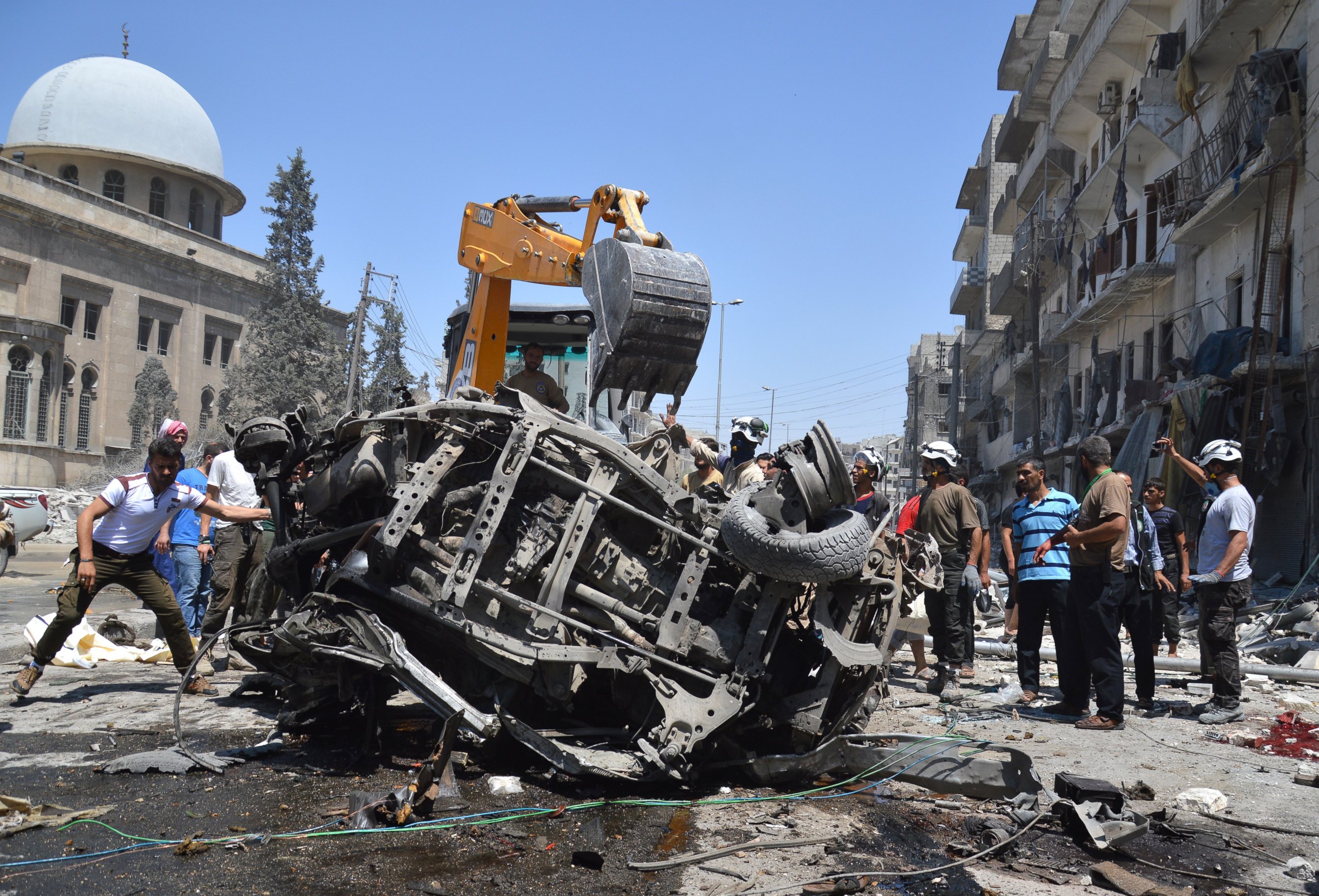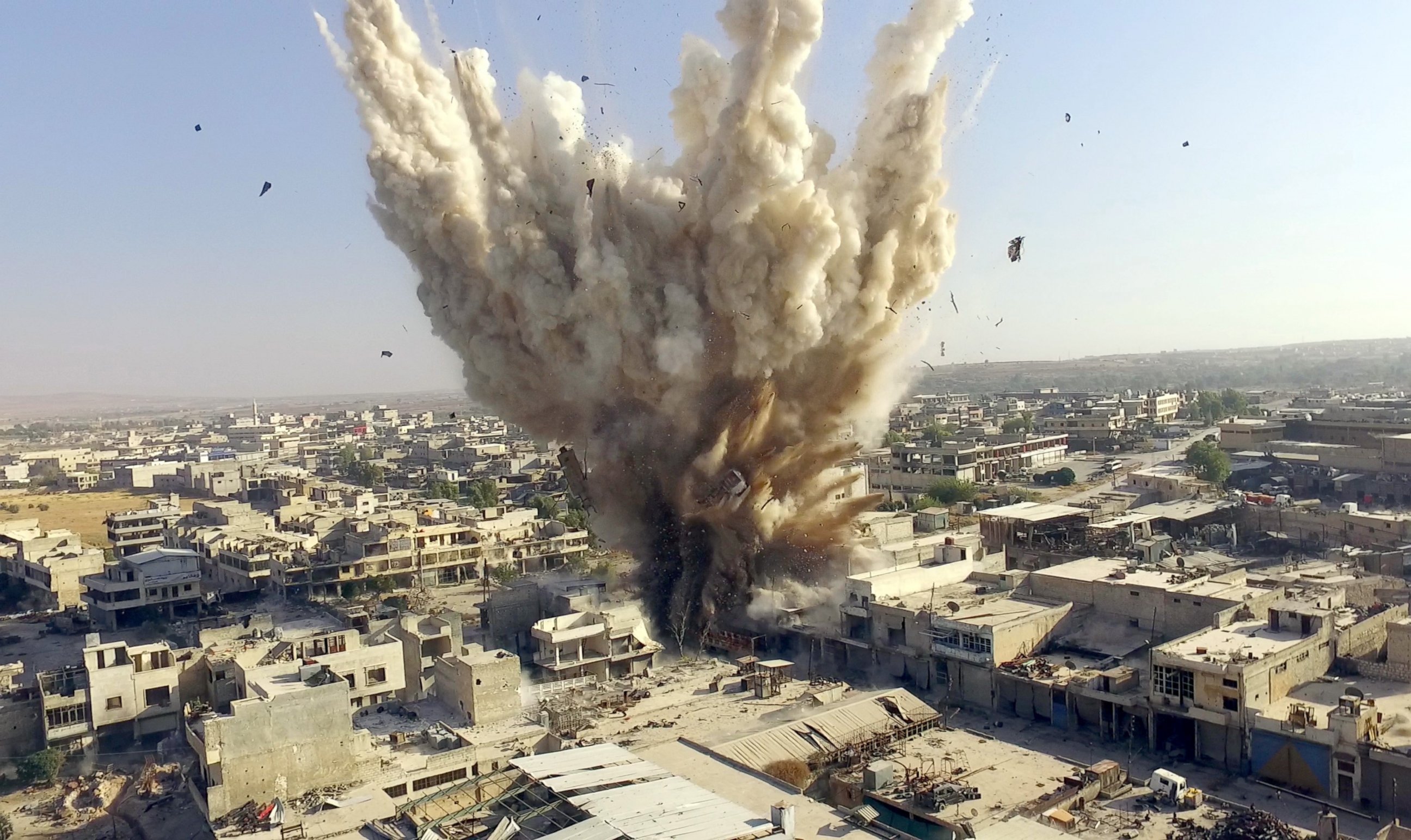Aleppo's Besieged Residents Face Relentless Airstrikes, Humanitarian Disaster
In a span of just 15 days, an estimated 327 people were killed in the city.
— -- The now-viral photo of a small boy covered in blood and dust after surviving an airstrike in Aleppo seems to have awakened the world to Syria's five-year civil war.
As the photo circulates on social media, ABC News breaks down what has been unfolding in the besieged city that is home to some two million people.
An Ongoing Humanitarian Disaster
With the Syrian government, Russia and other allies of Syrian President Bashar Al-Assad continuing to bombard Aleppo and its suburbs, the humanitarian crisis keeps growing. An estimated 250,000 to 275,000 people live in areas held by anti-government rebels that are a focus of intense airstrikes and artillery bombardment.
In Aleppo last weekend alone, airstrikes killed 45 civilians, according to the Syrian Observatory for Human Rights. The Observatory said last Sunday that at least 327 civilians, including 76 children and 41 women, were killed in Aleppo during the previous 15 days.
An Aleppo doctor told ABC News that his hospital sees about three to six children wounded every day.
About 2 million people living in and around Aleppo lack regular access to electricity and water. The city’s health infrastructure is also collapsing, according to the United Nations Office for the Coordination of Humanitarian Affairs.
Eight out of 10 hospitals and 13 out of 28 health care centers are either out of service or only partially functioning. Human Rights Watch said last week that it had documented six airstrikes by Syrian and Russian government planes in the rebel-held province of Idlib and parts of Aleppo that “temporarily shut down the health facilities and killed at least 17 civilians,” according to the Associated Press.

A doctor working in Aleppo told the BBC last week that he is now treating 150 casualties every day, more than double the number he dealt with before the recent upsurge in airstrikes.
The United Nations has repeatedly called for a ceasefire -- or at the very least a weekly 48-hour pause in airstrikes -- to allow for humanitarian aid to enter the city and for electricity and water systems to be repaired.
As food and medical supplies ran out last week, Russia set a three-hour temporary suspension of military activities in Aleppo. However, the United Nations called the pause too short for supplies to be taken into the city.

Reuters reported that fighting persisted despite the temporary ceasefire, as Syrian forces tried to reverse the opposition’s progress.
Today, the UN envoy to Syria admitted that no humanitarian aid has been able to reach Aleppo in more than a month.
Impact on Syria’s Children
After five years of war, Syria has lost a devastating percentage of its population. Millions of Syrian children have grown up among the horrors of the conflict, amid violent death and uncertainty. Here are the latest numbers around Syria’s war:
470,000 -- The estimated death toll in the conflict, according to a study published in February 2016. It is estimated that children account for about 20 percent of that total.
591 -- Cases documented by the United Nations of children being killed by strikes and bombings carried out by the Syrian government and its allies.
8.4 million -- Children affected in some way by the conflict, either living with violence at home or fleeing abroad, according to UNICEF. That’s more than 80 percent of the country’s young population.
15,000 -- Children who fled the country unaccompanied by adults.
3.7 million -- Children born since the conflict started. These children have lived with the war for their entire lives.
Relentless Airstrikes
Regaining control of Aleppo from rebel groups has been a key military aim of the regime of the Assad regime for much of Syria’s five-year-old civil war. In support of the government, Russia in fall 2015 established an air base on Syria’s western coast and began airstrikes around Aleppo as well as in central Syria with the stated aim of targeting terrorist groups.
Since then Russian military aircraft have conducted almost daily airstrikes in and around Aleppo at what Russia claims are ISIS targets. Syrian military aircraft also conduct airstrikes in the city which can sometimes make it difficult to pin blame for airstrikes that end up striking civilian targets.
American military officials have said publicly that they do not see an ISIS presence in and around Aleppo which is the main reason why the U.S. military does not conduct airstrikes there. American airstrikes in Syria are authorized to strike only at ISIS targets, and previous strikes against the al Nusra Front in northwestern Syria occurred as part of a separate counterterrorism mission.
That means the Russian airstrikes are actually targeting the various anti-Assad rebel groups that operate in and around the city.
Those airstrikes continued even during the cessation of hostilities agreement brokered by the United States and Russia earlier this year, which allowed for airstrikes against ISIS and the al Nusra Front.

While the Russian air force in Syria is equipped with some precision-guided munitions, American officials say that the overwhelming majority of the bombs being dropped are unguided gravity bombs commonly known as “dumb bombs.” Use of such bombs can lead to indiscriminate bombing of a target area resulting in casualties among civilians who might be nearby. The use of unguided bombs can be seen in videos of airstrikes released by the Russian Defense Ministry.
Earlier this year Russia announced it was scaling back the air mission it had begun in Syria last October. However, although some aircraft did return to Russia, the bulk of its air force remains inside Syria and their airstrike activity has not gone down. A U.S. official told ABC News this week that Russian aircraft are now conducting 60 to 70 air missions a day in Syria.
Claims of the Use of Incendiary Weapons
Amnesty International reported the use of chemical weapons by Syrian government forces on at least three occasions during a two-week period in August. According to Amnesty, the attacks included a use of chlorine gas that killed four and injured 60 people, 40 of whom were children.
One specific instance of chlorine gas use occurred last week in a rebel-held area. A doctor with the Syrian Medical Society said a woman and children were among the injured, and that one child died as a result of inhaling “toxic gas.”
The Syrian government has denied that it uses of chemical weapons.
A separate report from Human Rights Watch this week alleges that incendiary weapons were used by the Syrian government and Russia at least 18 times in the past nine weeks, mostly in and around Aleppo.
Russia is a signatory to an agreement by 113 countries that forbids the use of incendiary weapons on areas with concentrations of civilians, the New York Times reports. Syria is not a signatory. According to the Times, Russia has not responded to the most recent allegations about use of incendiary weapons.
ABC News’ J.J. Gallagher contributed to this report.




